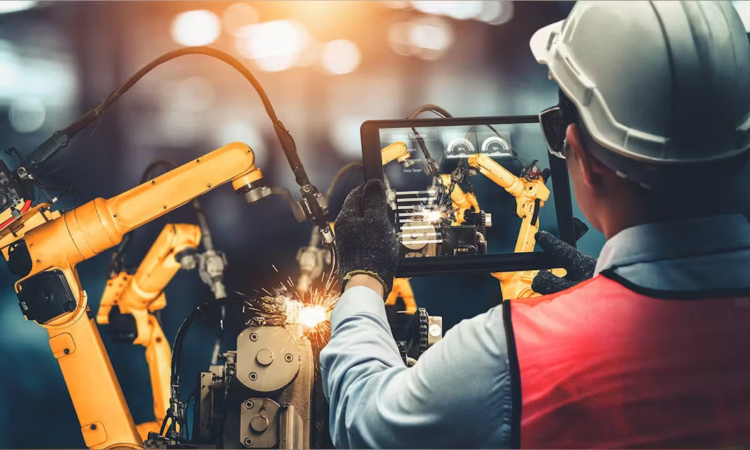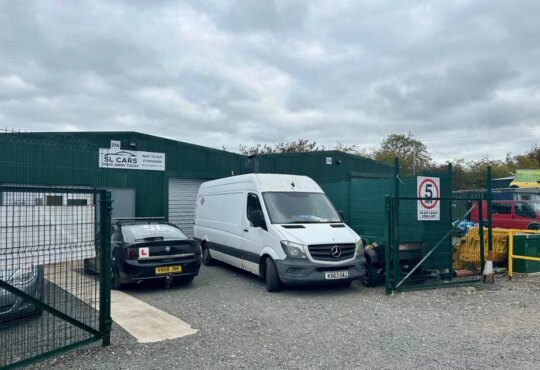
In this series, we have dismantled the monolithic view of AI, recasting it as a diverse toolbox of specialized instruments. We established a pragmatic role for Generative AI as a powerful interface and unstructured data processor, complementing the proven, deterministic models that have long been industrial workhorses.
This brings us to the final and most important frontier: If we have all these specialized tools, how do we get them to work together to solve complex, real-world problems?
The answer is not a single, all-knowing “super-AI.” The future of Industrial AI is a distributed, collaborative ecosystem of AI agents. And the real magic lies not in any single agent, but in their orchestration.
A Spectrum of Agents: From the Edge to the Cloud
First, it’s critical to understand that “agent” is not a single thing. Industrial agents will exist on a wide spectrum of complexity and will be deployed wherever they can provide the most value, from the deepest edge to the enterprise cloud.
Simple agents (the scouts): The simplest, most lightweight agents may not even use AI at all. Their job is to be a “scout,” living on an edge device like a sensor gateway or PLC. Their only task might be to collect a specific data point—a temperature, a production count—and pass it up the chain when asked. They are the eyes and ears of the operation.
Specialist agents (the players): These are more advanced agents that contain a specific skill or AI model. A specialist agent running on an edge server might contain a computer vision model dedicated to identifying packaging defects. Another agent, running in the cloud, might be a specialist in analyzing time-series vibration data to detect anomalies. They are the individual musicians, each a virtuoso on their own instrument.
Orchestrator agents (the conductors): These are higher-level agents whose primary function is not to perform a task themselves, but to manage a complex workflow. They receive a high-level goal and then conduct the orchestra, tasking the right scout and specialist agents to gather information and perform analyses in the proper sequence.
The Real Magic: Orchestrating an Agent Symphony
Let’s revisit our “Packaging Line 4” problem with this more nuanced, orchestrated approach. A Plant Manager issues the goal: “Diagnose and resolve the 15% throughput drop on Packaging Line 4.”
An orchestrator agent, likely running in the cloud, receives the goal and begins conducting:
- It first tasks a simple edge agent on the line’s PLC: “Report production count for the last 24 hours.” The agent retrieves the data and reports back, confirming the drop.
- The orchestrator now tasks a specialist agent running on an edge server on the factory floor: “Analyze vibration and current data for all motors on Line 4 for the past 24 hours.” This agent contains a specific machine learning model for anomaly detection. It runs its analysis locally and reports back: “High-confidence anomaly detected in vibration signature of case packer motor M-5.”
- With this lead, the orchestrator tasks another specialist agent in the cloud which contains a generative AI (LLM) model: “Search all maintenance logs and technical manuals related to motor M-5 and find historical instances of this vibration signature.” This agent reports back: “This signature has preceded bearing failure on this model three times. The manual suggests checking lubricant levels as a first step.”
- The orchestrator now has a complete, multi-source diagnosis. It synthesizes the findings and tasks a final integration agent whose specialty is communicating with enterprise software: “Draft a high-priority work order in our CMMS for motor M-5, citing ‘probable bearing failure,’ and attach the diagnostic summary and a link to the lubrication procedure in the manual.”
This distributed workflow—leveraging lightweight edge agents for real-time data, specialist AI agents for analysis and a conductor to manage the process—is far more resilient, scalable and efficient than a single, monolithic system.
The Missing Link: Protocols for a New Industrial Stack
This vision of a collaborative ecosystem presents a technical challenge: How do agents built by different vendors, running on different hardware, communicate effectively? This requires a new layer in the industrial technology stack, built on open standards. Two concepts are paramount:
Agent-to-agent (A2A) communication: This is the standardized language that allows agents to exchange tasks, data and results. It’s the protocol that enables the orchestrator to reliably task the specialist and receive its findings.
Model-context protocol (MCP): This is the standard for what is being said. When an agent passes data to an AI model or another agent, MCP ensures all the vital context—asset ID, units of measure, data lineage, business objective—is passed along with it. This prevents AI models from making assumptions and provides the guardrails needed for them to perform accurately and safely.
These emerging protocols are the critical enablers for true agent orchestration. For readers who want a deeper technical understanding of this new industrial protocol stack, I’ve written a more detailed blog series on A2A and MCP which you can find on the ARC Advisory Group website.
The future of Industrial AI will not be found in a single, all-powerful model. It will be found in the elegant symphony of countless agents, large and small, working in concert from the edge to the cloud. This orchestrated, collaborative intelligence, built upon a foundation of open standards, is what will finally deliver on the long-held promise of the smart, resilient and self-optimizing factory.





